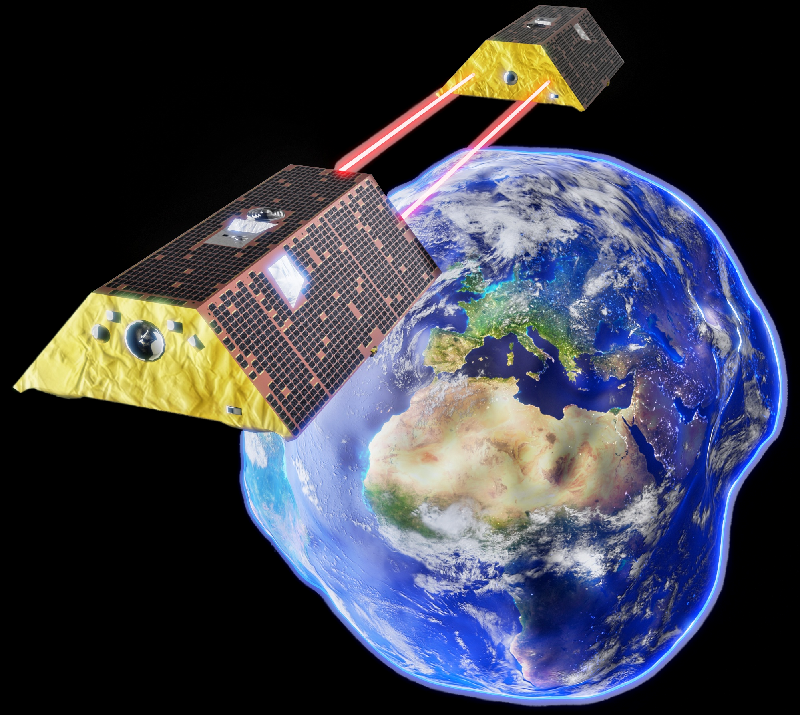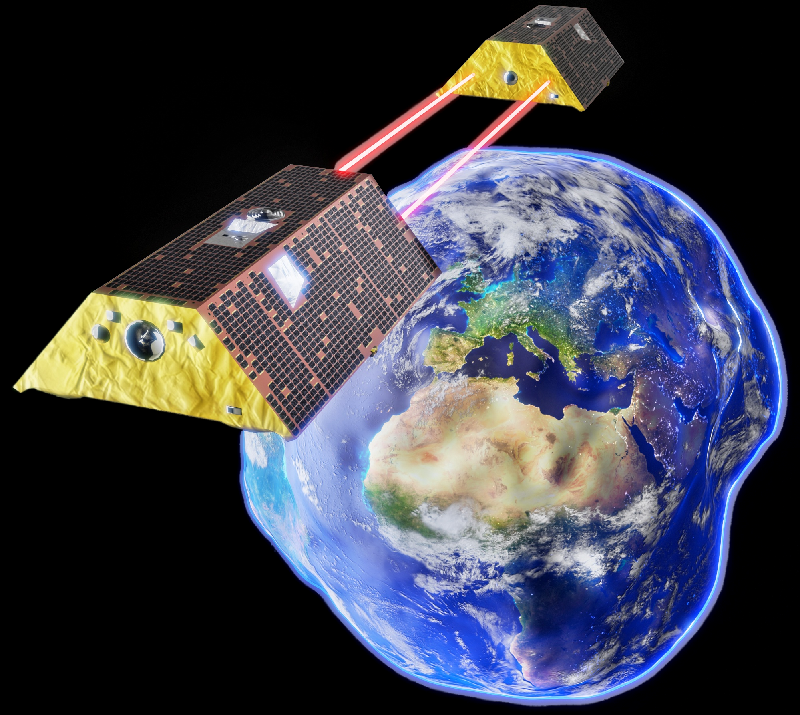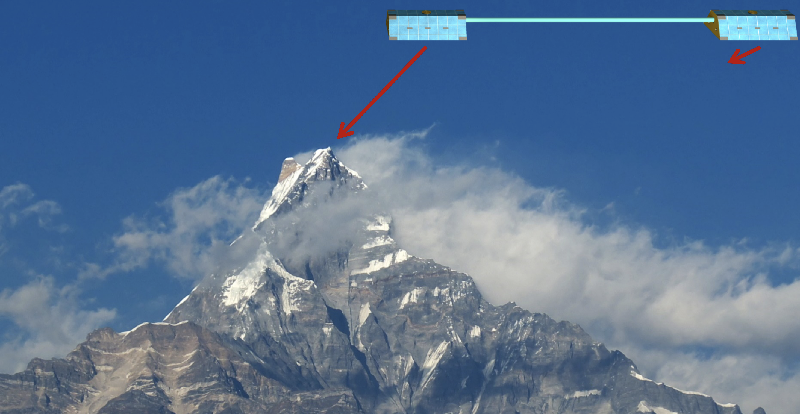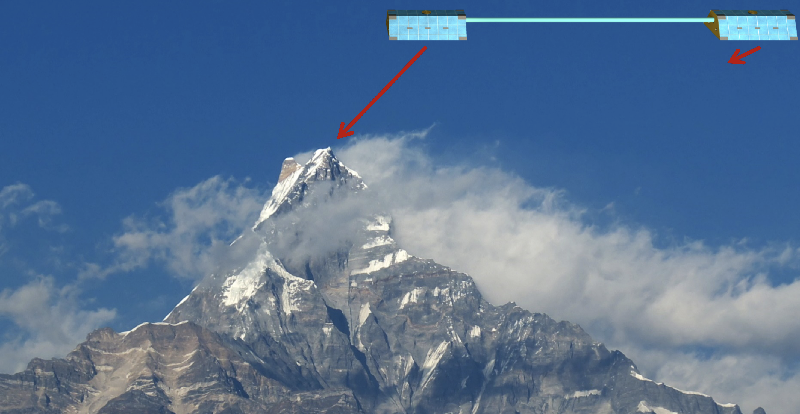Spacecraft Separation Measured to the Nanometer
Detecting tiny changes in the Earth’s gravitational field caused by large shifts of mass on the planet—ocean currents or glacier movements, for example—is a powerful method for monitoring geophysical processes. A space mission has now demonstrated a technique for making such measurements with unprecedented precision, by detecting gravity-induced changes in the distance between two orbiting satellites using the interference of laser beams. The technique might be valuable not just for planetary science but for detecting gravitational waves produced by violent astrophysical events in the cosmos.
Measuring distances in space using laser interferometry has been demonstrated only once before: on board a mission called LISA Pathfinder, launched in 2015 as a proof-of-principle mission for space-based detection of gravitational waves. The method was used over a distance of only 40 cm (see 7 June 2016 Viewpoint). A fully fledged gravitational-wave observatory called LISA (Laser Interferometer Space Antenna) is currently planned for the 2030s and will conduct interferometric distance measurements between three spacecraft 2.5 million km apart.
The new measurements come from a mission called GRACE Follow-On, the successor to the GRACE (Gravitational Recovery and Climate Experiment) mission, which flew from 2002 to 2017 and which was run by NASA and the German Aerospace Center (DLR). GRACE included two spacecraft on an over-the-poles orbit 450 km above the Earth. Their separation of around 200 km was tracked by bouncing microwaves between them, in conjunction with accurate monitoring of their orbits using GPS. Whenever the satellites passed over a region of the Earth with slightly stronger or weaker gravity, the spacecraft experienced a wiggle in their separation.
In 2018, NASA and several German institutions launched GRACE Follow-On, in which the two spacecraft were equipped with an even more sensitive ranging instrument based not on microwaves but on laser beams. The principles of such measurements are well tested on Earth, but making them work in space was a major challenge. The laser frequency has to be kept very stable. The researchers must also correct the measurements for distance variations not caused by gravity, for example due to drag on the spacecraft from the tenuous atmosphere. They also have to filter out noise in the data intrinsic to the operation of the lasers.
The direction of the laser beam must be continually adjusted to keep it on target. “Each spacecraft jitters randomly by an amount large enough to make the beam completely miss the other spacecraft if we didn’t have a continuously tracking beam-steering mechanism,” says Gerhard Heinzel of the Max Planck Institute for Gravitational Physics in Hannover, the project leader for the German partners. For two craft about 200 km apart, he says, the beam tracking keeps the laser locked onto a spot that moves by no more than a meter. Building optical systems capable of maintaining such precision and stability “is a challenge even in a pristine laboratory environment, let alone in space, with a violent launch and the transition from air and Earth’s gravity to vacuum and zero gravity,” says US project leader Kirk McKenzie of the California Institute of Technology in Pasadena.
The first results now reported from GRACE Follow-On confirm that the instruments are capable of making distance measurements with high accuracy. With the spacecraft about 220 km apart, the system has the capability to detect distance changes of just 200 picometers—comparable to the size of an atom—occurring periodically once per second for a few seconds.
“The laser link is kept alive without any interruption for hundreds of orbits around the Earth, while the spacecraft chase each other from pole to pole at speeds of more than 25,000 km per hour,” says Heinzel. Thanks to this demonstration, he says, “the next generation of Earth gravity missions is very likely to use laser ranging.”
“The reliability of ranging measurements is very important” for Earth observation, says Jakob Flury of the Institute of Geodesy at the University of Hannover in Germany. “High-precision laser interferometric ranging could prove very helpful for monitoring large-scale gravity and mass changes in the Earth system due to processes like ice-sheet melting, droughts and floods, and tectonic shifts.”
“I am sure there will be new physics and a lot of new science to come from this work as the data collection continues,” says Christian Killow of the University of Glasgow in Scotland, who works on space-based interferometry for gravitational-wave detection. “The skill and dedication needed to make this happen should not be underestimated.”
This research is published in Physical Review Letters.
–Philip Ball
Philip Ball is a freelance science writer in London. His latest book is How Life Works (Picador, 2024).







